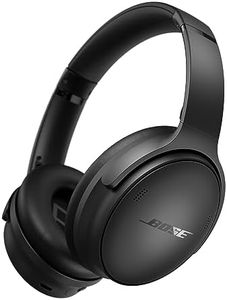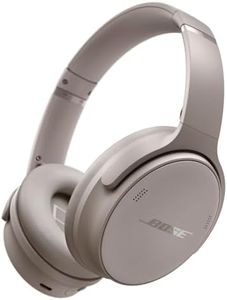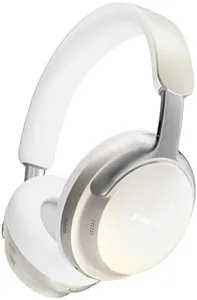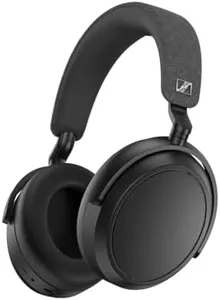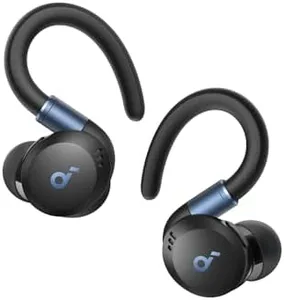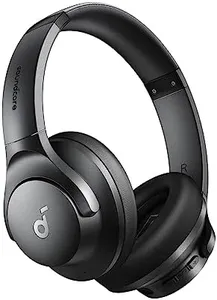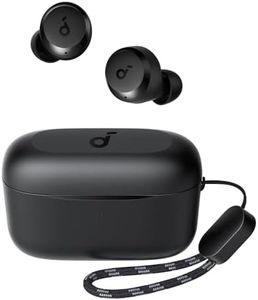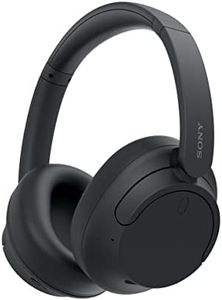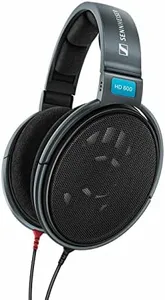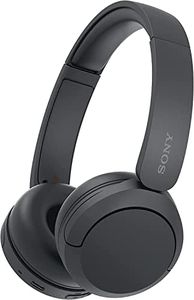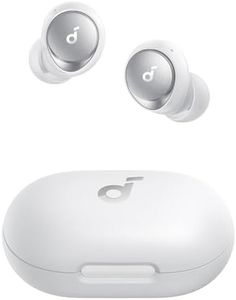We Use CookiesWe use cookies to enhance the security, performance,
functionality and for analytical and promotional activities. By continuing to browse this site you
are agreeing to our privacy policy
10 Best Headphones Under 200
From leading brands and best sellers available on the web.Buying Guide for the Best Headphones Under 200
Choosing headphones in the under $200 category can be both exciting and a bit confusing, since there are many options that blend quality with affordability. The key is to focus on what's most important for how and where you want to use your headphones, such as sound quality, comfort, type (in-ear, on-ear, over-ear), and features like noise cancellation or wireless connectivity. Understanding the main specifications will help you compare different models and find the pair that suits your listening habits and daily life best.Type (In-Ear, On-Ear, Over-Ear)The type refers to the style and how the headphones fit on or in your ears. In-ear headphones, sometimes called earbuds, sit inside your ear canal and are great for portability and active use, but some people may find them uncomfortable for long periods. On-ear headphones rest on top of your ears and are usually lighter than over-ear models, making them easy to carry, although they may not block outside noise as well. Over-ear headphones completely cover your ears and often provide better sound quality and comfort for longer listening, but they are bulkier. Think about where and how you'll use your headphones – for example, choose in-ear for travel and workouts, or over-ear for home listening and long sessions.
Sound Quality (Frequency Response, Drivers)Sound quality in headphones is shaped by factors like frequency response and driver size. Frequency response indicates the range of sound the headphones can reproduce, measured in hertz (Hz). A wider range means the headphones can handle deeper bass and crisper highs, but keep in mind that most people cannot hear the extremes. Driver size, measured in millimeters (mm), impacts how dynamic and clear the sound can be – larger drivers often mean better bass and louder sound. For most everyday listeners, a balanced sound profile is more important than chasing extreme specs, so look for headphones known for clear mids and highs as well as sufficient bass for your favorite music genres.
Wired vs. Wireless (Bluetooth Versions, Battery Life)Headphones can connect to your devices via a cable (wired) or through Bluetooth (wireless). Wired headphones generally offer better sound quality and no worry about charging but may be less convenient for movement. Wireless headphones give you freedom from cables; check the Bluetooth version (higher versions like 5.0 and above typically mean better range and stability) and battery life, which tells you how long you can listen before needing to recharge. Choose wired if you want consistency and best sound, or wireless for flexibility and use on the go.
Noise Cancellation (Active or Passive)Noise cancellation helps reduce outside sounds, letting you focus on your music or calls. Passive noise isolation happens simply from the headphone's design, blocking some noise by physically covering your ears. Active noise cancellation (ANC) uses technology to counteract sound from your surroundings, creating a quiet zone. ANC is great for travel or busy environments but may use up battery faster. Choose based on where you'll use them most—if you’re in noisy areas often, ANC can be valuable, but for personal or quiet spaces, passive isolation may be enough.
Comfort and Fit (Ear Cushions, Headband, Weight)Comfort is shaped by the materials and design of ear cushions, how the headband fits, and the weight of the headphones. Softer, breathable ear cushions and an adjustable headband prevent pressure during long sessions. Lightweight models are less tiring for extended use. Try to match your usual listening duration and environment—if you listen for many hours, prioritize comfort features.
Durability and Build QualityDurability refers to how sturdy and long-lasting the headphones are, influenced by materials like plastic, metal, or fabric. Well-built headphones can withstand daily wear and tear, whether you plan on traveling or just want them to last. Think about how rough you'll be with your headphones; if you tend to toss them in a bag or use them outdoors, seek tougher construction.
Controls and Features (Microphone, Touch Controls, Voice Assistants)Modern headphones often include built-in microphones for calls, controls on the earcups or cable for volume and playback, and even support for voice assistants. These features add convenience, especially if you use your headphones for phone calls, virtual meetings, or want to adjust your music quickly without reaching for your device. If these tasks are important to you, make sure the headphones you're choosing offer them.
